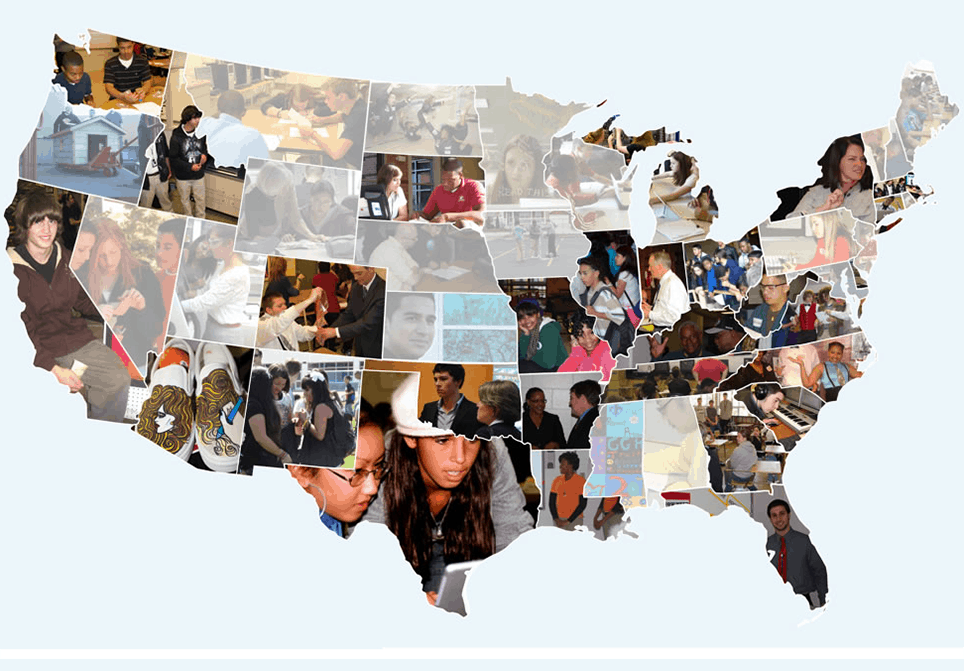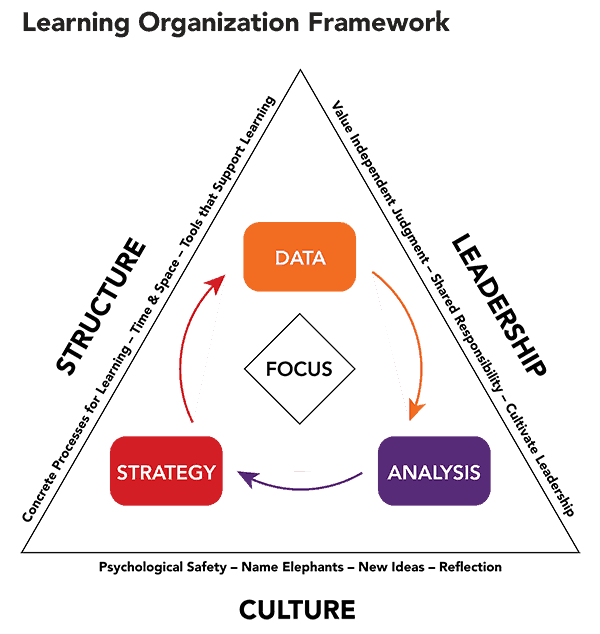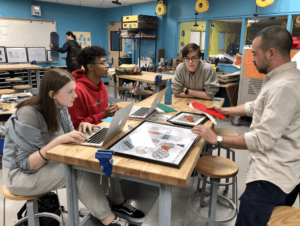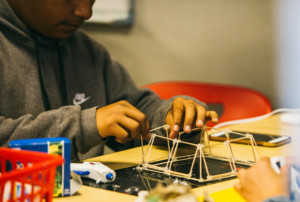School Networks Scale Innovation

School networks are one of the most important innovations in modern era of US K-12 education. Charter management organizations (CMO) have grown to more than 2200 schools and get all the attention–good and bad. But networks connecting district schools are equal in scale and have also made an important contribution.
These member networks are voluntary associations of schools focused around design principles and support services. All of them benefit from philanthropic contributions.
Project-based Big Picture has 55 US schools and 39 international partner schools (See feature on dual enrollment). Edvisions has 37, mostly upper midwest schools.
Internationals Network For Public Schools has 22 schools serving young people new to English. Asia Society’s International Studies Schools Network has 40 schools in eight states.
With roots in expeditions and Outward Bound, EL Education has 152 schools with a recent focus on curriculum. (See trip report to Brooklyn Launch and project-based lessons from Ron Berger.)
New Tech Network is a project-based network of 200 mostly high schools in 29 states (see feature). The network is based on Napa New Technology High School opened in 1996 by Napa Valley USD.
ConnectEd is a nine district initiative sponsored by the Irvine Foundation in 2009. The Linked Learning approach combines college-focused academics, work-based learning and intensive student supports.
With High Tech High and Envision Education (managed charter networks) the above networks are part of the Hewlett Foundation’s Deeper Learning network.
NAF, the largest and one of the oldest member network had more than 700 sites and scaled back to 667 a few years ago to improve quality. National Academy Foundation (NAF), said the NAFTrack Certification system combines college and career ready skills and dispositions in a comprehensive and cumulative system that combines coursework at school and workplace observations with supervisor feedback.
Coalition of Essential Schools, founded by Ted Sizer around 10 principles outlined in Horace’s Compromise, has 600 members.
Urban Assembly serves over 9,000 students through 21 student-centered public middle and high schools, including seven Career & Technical Education schools and three all-girls schools.
YouthBuild is a network of 260 high school programs in 46 states aimed at boosting employability in building-related trades and leadership development.
All of these network except the Irvine-sponsored ConnectEd received early support from the Gates Foundation.
Scaling Strategies
While most of the older member networks have stalled, a few are still growing. Their updated value proposition is relevant to current challenges. Growing networks use a combination of three strategies.
Grant-centric network. All of these networks experienced their most rapid growth when grants were available to new member schools. Most local YouthBuild programs are recipients of a federal grant and affiliate for technical assistance.
Franchise network. Most of these networks employ strategies similar to franchising; for an annual fee, a member school gains access to the brand, design principles, tools, training, and convening.
The KIPP network is a good example of the franchise approach. KIPP Foundation provides design principles, leadership development, technical and philanthropic support, and convening. All KIPP schools operate as public charters. A few KIPP regions operate as managed networks, but most KIPP schools operate autonomously. Like the Big Picture network, design principles and leadership development are non-negotiable elements.
Platform-centric network. Next generation learning incorporates blended, personalized, and competency-based learning with sophisticated designs and tools. Breakthrough learning formats will share powerful learning platforms. Rather than top-down deployment across a district, these combinations of learning models and platforms are more likely to be adopted by schools or feeder patterns.
New Tech Network is the best and largest example of a platform-centric network. Growing by about 10% annually, member schools appreciate the library of integrated projects, the tools for creating and assessing projects, and the online and onsite support. Starting Buzz from Agilix, New Tech is updating the Echo platform to provide better support for personalized and project-based learning. Local New Tech adoptions are typically grant supported making it a good example of all three scaling strategies.
Given the rapid growth of the New Tech Network, we asked CEO Lydia Dobyns why her network was growing while others had stalled. She said, “Our focus, bordering on obsession, over creating value for schools to join and to stay part of the Network has helped fuel our growth.” Dobyns noted four keys to success:
- The four pillars of the New Tech model (culture, PBL, Platform and student outcomes)
- Extremely effective professional development and coaching that is differentiated for classroom teachers, administrators and district staff;
- District relationship building: significant time supporting districts on school design and ensuring the conditions that support implementation; and
- A commitment to continuous improvement/innovation resonates deeply with schools and districts.
New Tech uses a Learning Organization framework (below) to promote continuous improvement.
Even though New Tech partnerships start with a district agreement, Dobyns notes “the very nature of how school districts organize themselves can work against the growth of networks.” There is often a bias toward internal services and consistency between schools.
“Much of the professional development industry reinforces individual capacity development,” added Dobyns, “but what sets Networks apart are ways to focus on collective capacity building—helping schools learn how to learn together, collaborate effectively and become highly adaptive systems.”
New learning models that incorporate blended and competency-based learning are a team sport–new staffing patterns require more collaboration and shared tools require collective capacity. Generic training is less relevant to schools that adopt or develop unique models.
Dobyns sees New Tech on the cusp of being able to provide differentiated support to schools whether struggling, mature, or seeking innovation. This level of differentiation would signal a new development in network services.
By matching design, technology, professional learning, networks can provide a short cut to coherence and performance. Networks providing relevant services at a competitive price continue to grow in size and impact.
For more on scaling and networks, check out:
- Scaling Up: Give Money and Advice this #GivingTuesday
- 4 Strategies For Scaling A Successful Program
- Scaling Nonprofits: Lessons from the Experts
Stay in-the-know with all things EdTech and innovations in learning by signing up to receive the weekly Smart Update. This post includes mentions of a Getting Smart partner. For a full list of partners, affiliate organizations and all other disclosures please see our Partner page.








Catherine Uong
I'm surprised that Ashoka's Changemaker Schools is not on this list:
https://www.ashoka.org/meet-changemaker-schools
"By 2016, Ashoka will include more than 500 primary/elementary schools, 500 secondary/middle/high schools and up to 100 universities in our network."